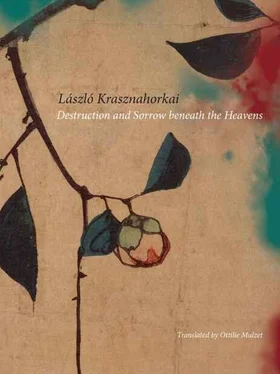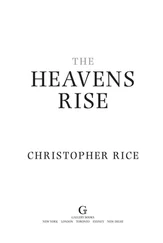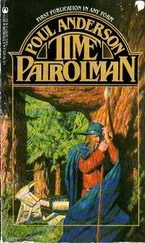[47] Jiangtian monastery: A monastery that at one time covered all of Jinshan. Originally built during the Jin dynasty (265–420), its present form dates from the Qing era, and its justly renowned buildings have served as models for countless structures in China.
[48] Zhongleng quan (‘The First Spring under Heaven’): Also known as ‘The Centre-Cold Spring’, it had its source in earlier times in the Yangtze. It is supposedly still the best water for brewing tea.
[49] luohan: In Hinayana Buddhism, a saint who has reached the highest level of enlightenment.
[50] Fahai: An evil monk from a popular Chinese fable. He tries to separate a happily married couple; the wife, however, who is none other than the White Snake in human form, battles with the monk to regain her stolen husband.
[51] Jiaoshan: An island in the Yangtze near Zhenjiang, upon which can be found many beautiful monuments. The name of the island is derived from a hermit who refused a government position despite it being repeatedly offered to him by the emperor.
[52] Beilin (‘The Forest of Steles’): A general name for collections of inscribed steles. The Beilin of Zhenjiang is located in the Dinghui temple.
[53] moon gate: A circular gate in a wall, a frequent element in Chinese parks and gardens.
[54] Orchid Pavilion: Originally the residence in Shaoxing of Wang Xizhi, the renowned calligrapher. A work of the same title immortalizes a meeting of literati which took place here in 353; its (now lost) afterword by Wang is the greatest Chinese calligraphic work of all time.
[55] Zhao Mengfu (1254–1322): The most well-known Yuan-era court painter and calligrapher.
[56] Su Shi (also known as Su Dongpo): Politician and writer, and one of the most important poet of the Song era.
[57] the stele. . of Yi He Ming (‘Sacrificial Inscription for a Crane’): Dating from 514 and located in Zhenjiang, this inscription is the work of an unknown author, lamenting the death of a crane raised at home.
[58] Yu Yuan (‘The Garden of Joys’): A private garden in Shanghai, built at the end of the sixteenth century by a solitary government official and based on the imperial parks in Beijing.
[59] Bund: The city-centre riverbank in Shanghai. A famous promenade, where most of the nineteenth- and twentieth-century Western-style buildings are located.
[60] Huangpu: A tributary of the Yangtze that flows through Shanghai.
[61] Pudong: Since 1990, the ultramodern trade and financial district on the banks of the Huangpu, across the Shanghai city centre.
[62] ‘Middle Kingdom’: Also known as Zhongguo, the designation for China. According to tradition, this name refers to the Chinese view of their country as the centre of the world.
[63] kunqu: One of the styles of Chinese opera among the many (up to 300) which still exist. It flourished most extensively between the sixteenth and nineteenth centuries. Based on the merging of the northern and southern operatic styles, it is characterized by extraordinary restraint and refinement in its music, its texts and its theatrical performances.
[64] Yifu Theatre: Originally known as Tianchan Theatre, it is currently named after one of its sponsors. It is the oldest and most well-known theatre in Shanghai which still hosts performances of Chinese traditional opera. It particularly flourished between the two world wars.
[65] Cultural Revolution (1966–76): The most extreme period of the power struggles that raged among the ranks of the Chinese Communist Party leaders, in the course of which Chairman Mao Zedong also involved the youth of the country in his drive to liquidate his enemies. This period in Chinese history was characterized by chaotic interpersonal relations, the crippling of the intelligentsia, the annihilation of cultural values and wildly extreme personality cults.
[66] Confucianism: An ancient philosophical school and the defining ideology in the Chinese empire in the second century bce.
[67] Taihu (‘Lake Tai’): A lake on the border between Jiangsu and Zhejiang. China’s fourth largest freshwater lake, it is a popular tourist destination. Many unusual stone formations can be found in the surrounding areas and are often used as garden ornaments.
[68] Qing dynasty (1644–1911): The last period of imperial dynastic rule in China. The first half was an age of consolidation, conquest and economic growth as well as one of greater societal rigidity, whereas the second half was characterized by Western influence, uprisings and the hastening collapse of the old order.
[69] Southern Song dynasty (1127–1279): The second half of the Song dynasty. Due to Jurchen invasions from Manchuria, the dynasty was forced to retreat to southern China. However, the cultural development during this period makes it one of the most exceptional eras in Chinese history.
[70] Xihu (‘West Lake’): West Lake is surrounded by Hangzhou. Since ancient times, it has been one of China’s most famous sights.
[71] Gushan (‘Solitary Hill Island’): An island in the West Lake of Hangzhou. In the eighteenth century, the location of an imperial summer palace.
[72] dams of Bai Juyi: Dams in the Xihu at Hangzhou, the construction of which, according to tradition, was ordered by the great poet Bai Juyi during his time as governor of the area (824–26).
[73] Chan Buddhism (better known by its Japanese designation, Zen): A school of Chinese Buddhism according to which monks can gain nirvana. The more influential branches taught that individuals who are prepared for that goal can attain enlightenment without conscious striving.
[74] Jinci temple: A temple located in Hangzhou, approximately a thousand years old. Seriously damaged during the Taiping Uprising, it was reconstructed in 1949.
[75] Feilai Feng (‘The Peak That Flew Hither’): A low-lying mountain near Hangzhou, it acquired its name from an Indian monk who lived in the third century and according to whom the mountain is a part of an Indian holy mountain that flew to Hangzhou. On the mountain’s slopes and in its system of caves are approximately 300 carved statues dating between the tenth and fourteenth centuries.
[76] Yuhuangshan (‘Jade Emperor Hill’): A famous mountain lookout next to the Xihu in Huangzhou, it derives its name from a Taoist temple built 400 years ago but now converted into a teahouse. The Jade Emperor was a legendary ruler of ancient times and one of the deities of Taoism.
[77] Leifeng Ta (‘Storm Peak Pagoda’): A famous tower on one of the peninsulas of the Xihu in Hangzhou, which collapsed in 1924, approximately a thousand years after its construction.
[78] Yuquan (‘Jade Spring’): A famous spring in Hangzhou. Also called ‘Clapping Lake’ because, according to legend, 1,500 years ago, it burst out of the ground at the sound of clapping.
[79] Hupaquan (‘Running Tiger Spring’): According to the Chinese, this spring in the excursion zone of Hangzhou is ranked third in the world with regard to water quality. It received its name from a legend about a benevolent spirit that sent a distant spring from Hengshan mountain to a monk who had settled here.
[80] Longjing (Dragon Well): A karst well in the outer precincts of Hangzhou. China’s most famous tea, named after the well, is produced in the vicinity. True connoisseurs prepare it with water from the Hupaquan.
[81] Lingyin Si (‘The Temple of the Soul’s Retreat’): A monastery founded in 326 at the foot of the Feilai Feng, in a river valley in Hangzhou. It is renowned for its approximately 20-metre tall Buddha statue. The present structure dates from the seventeenth century.
[82] Longmen: A renowned group of temple caves in the province of Henan, near Luoyang.
[83] Datong: A city renowned for its temple caves in the province of Shanxi.
Читать дальше












